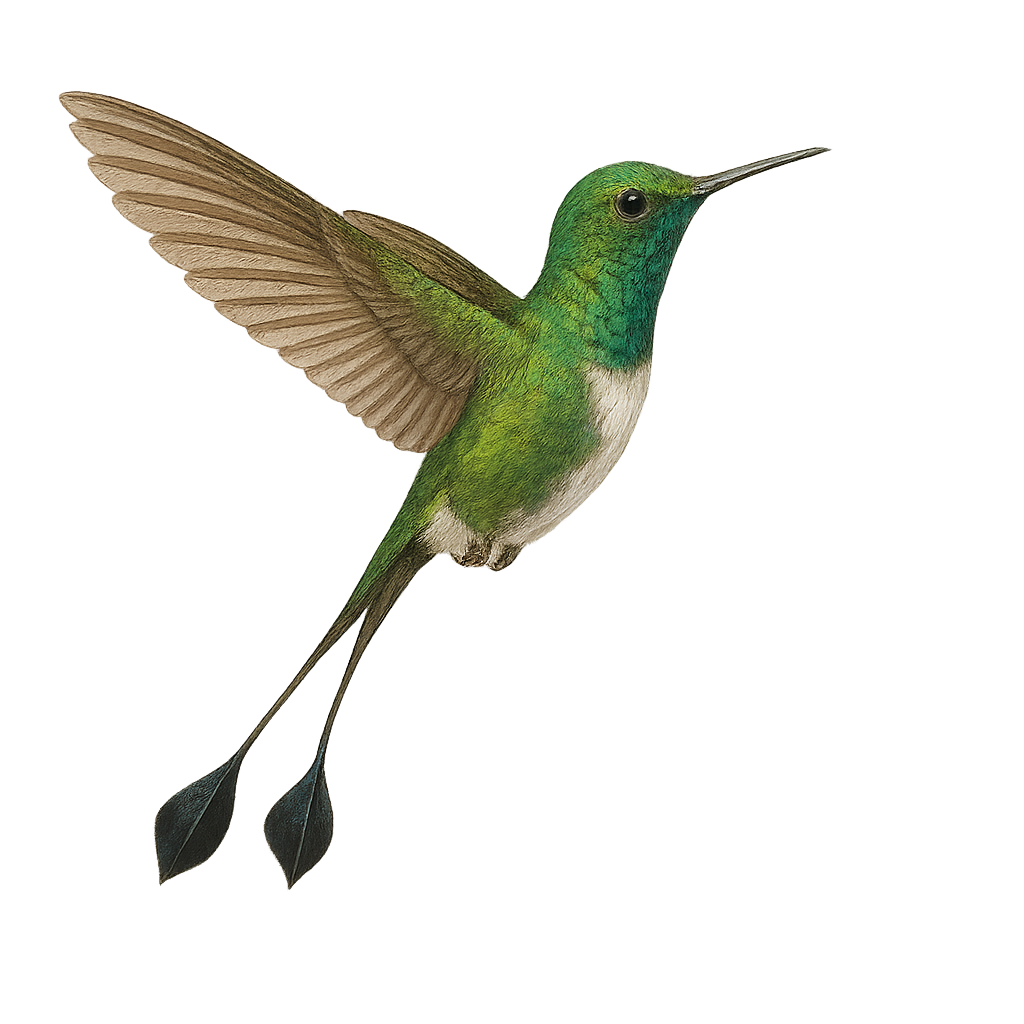Your wildlife photography guide.
Explore the booted racket-tail in detail, study its behavior, prepare your shots.
Where to observe and photograph the booted racket-tail in the wild
Learn where and when to spot the booted racket-tail in the wild, how to identify the species based on distinctive features, and what natural environments it inhabits. The WildlifePhotographer app offers tailored photography tips that reflect the booted racket-tail’s behavior, helping you capture better wildlife images. Explore the full species profile for key information including description, habitat, active periods, and approach techniques.
Booted Racket-tail
Scientific name: Ocreatus underwoodii

IUCN Status: Least Concern
Family: TROCHILIDAE
Group: Birds
Sensitivity to human approach: Suspicious
Minimum approach distance: 5 m
Courtship display: February to March
Incubation: 15-17 jours
Hatchings: February to April
Habitat:
Humid forests, forest edges, mountainous areas
Activity period :
Primarily active during the day, with peak activity in the morning and late afternoon.
Identification and description:
The Ocreatus underwoodii, known as the Booted Racket-tail, is a small hummingbird with a unique appearance. This bird is distinguished by its long racket-shaped tail feathers, giving it a graceful look in flight. Males display bright emerald green plumage, while females are more subdued with softer hues. It is primarily found in the humid forests and forest edges of the Andes, where it feeds mainly on flower nectar and small insects. Its fast and agile flight allows it to move easily between flowers. Although its habitat is threatened by deforestation, it remains relatively common in some areas.
Recommended lens:
400 mm – adjust based on distance, desired framing (portrait or habitat), and approach conditions.
Photography tips:
To photograph the Booted Racket-tail, it is advisable to use a 400mm lens or longer to capture the details of its feathers and unique tail. Opt for early morning hours when the light is soft and the bird is active. Stay at least 5 meters away to avoid disturbing it. Use a tripod to stabilize your camera and a remote shutter release to prevent vibrations. Be patient and wait for it to perch on a flower for the perfect shot.
The WildlifePhotographer App is coming soon!
Be the first to explore the best nature spots, track rutting seasons, log your observations, and observe more wildlife.
Already 1 430 wildlife lovers subscribed worldwide

